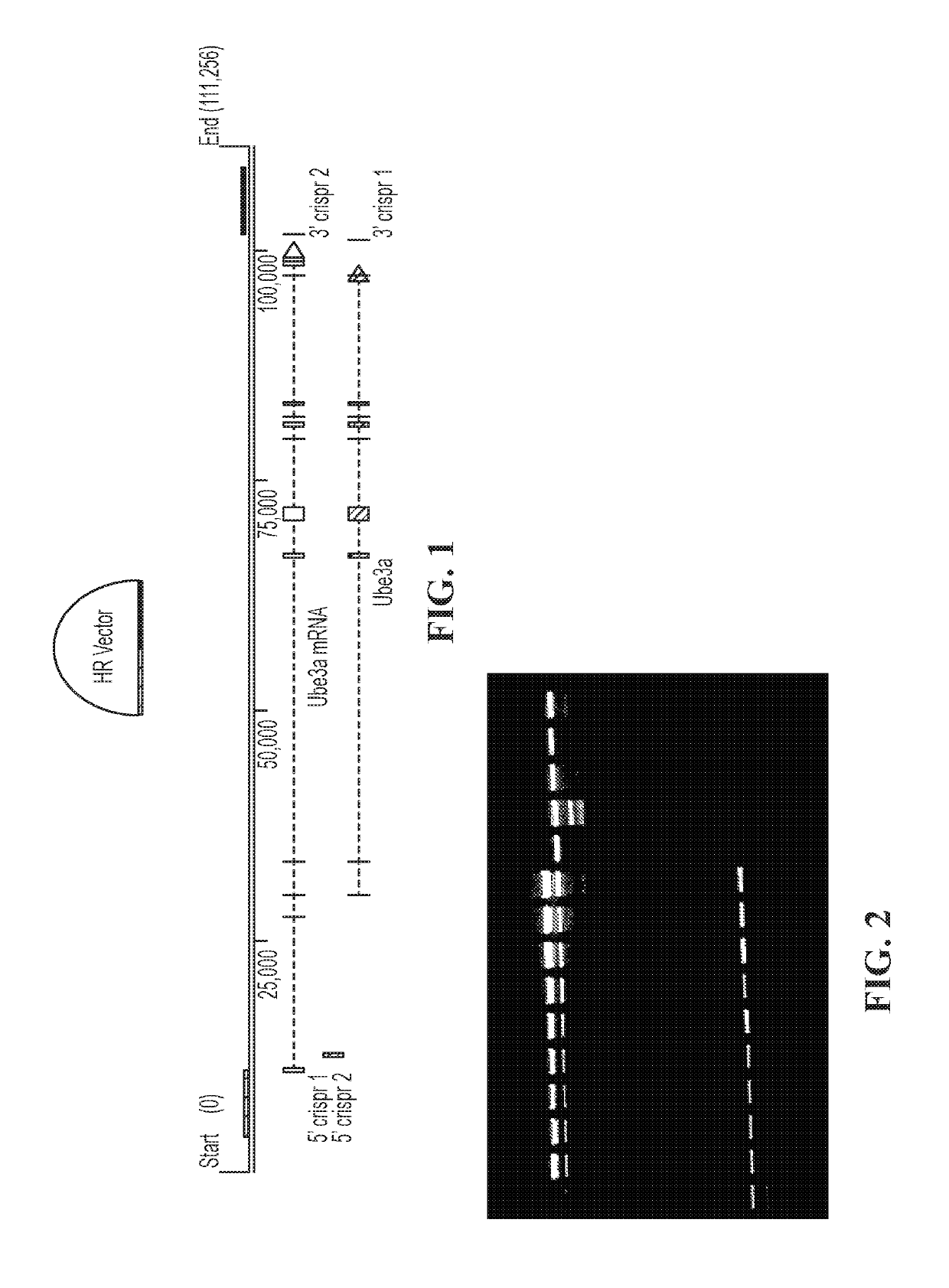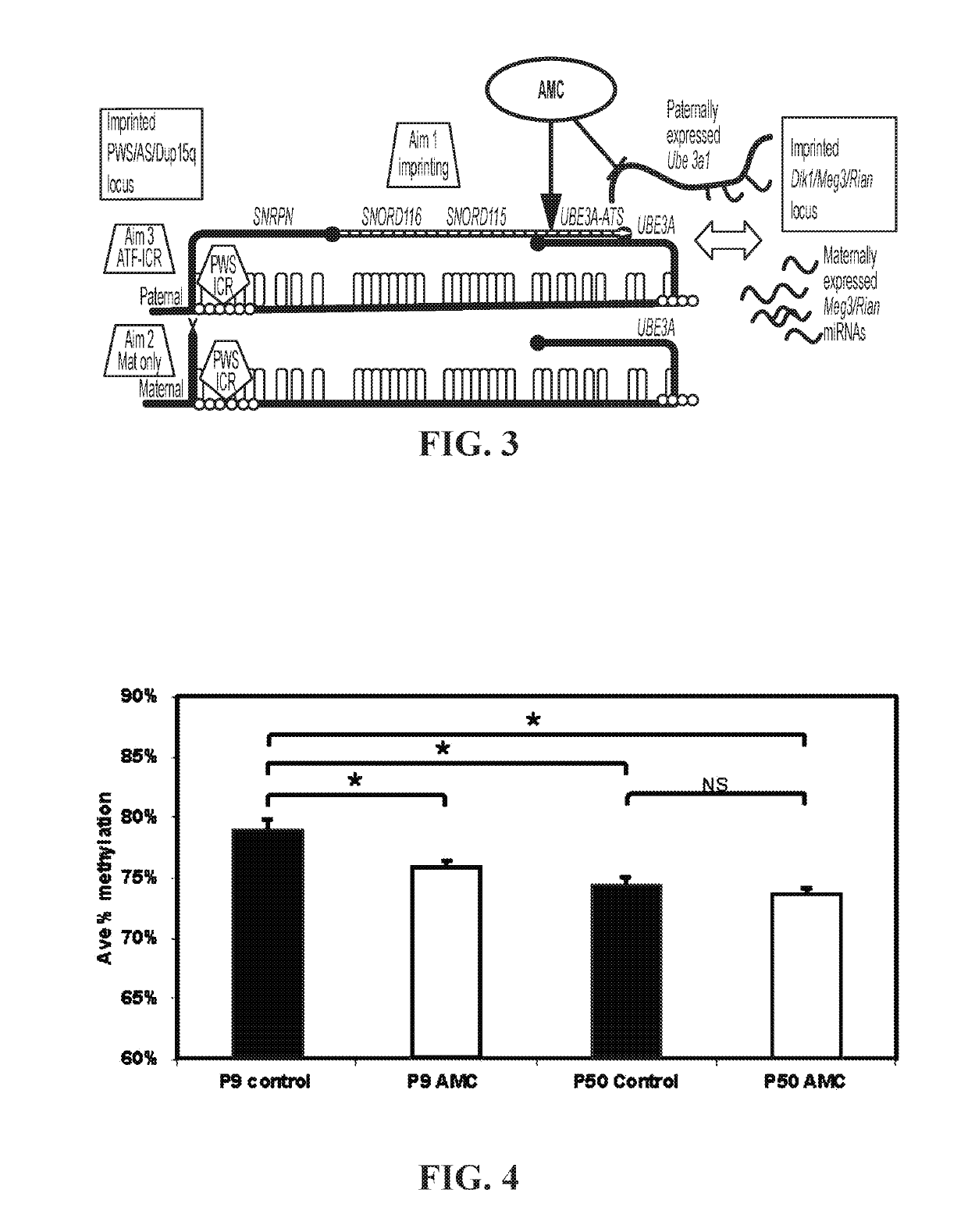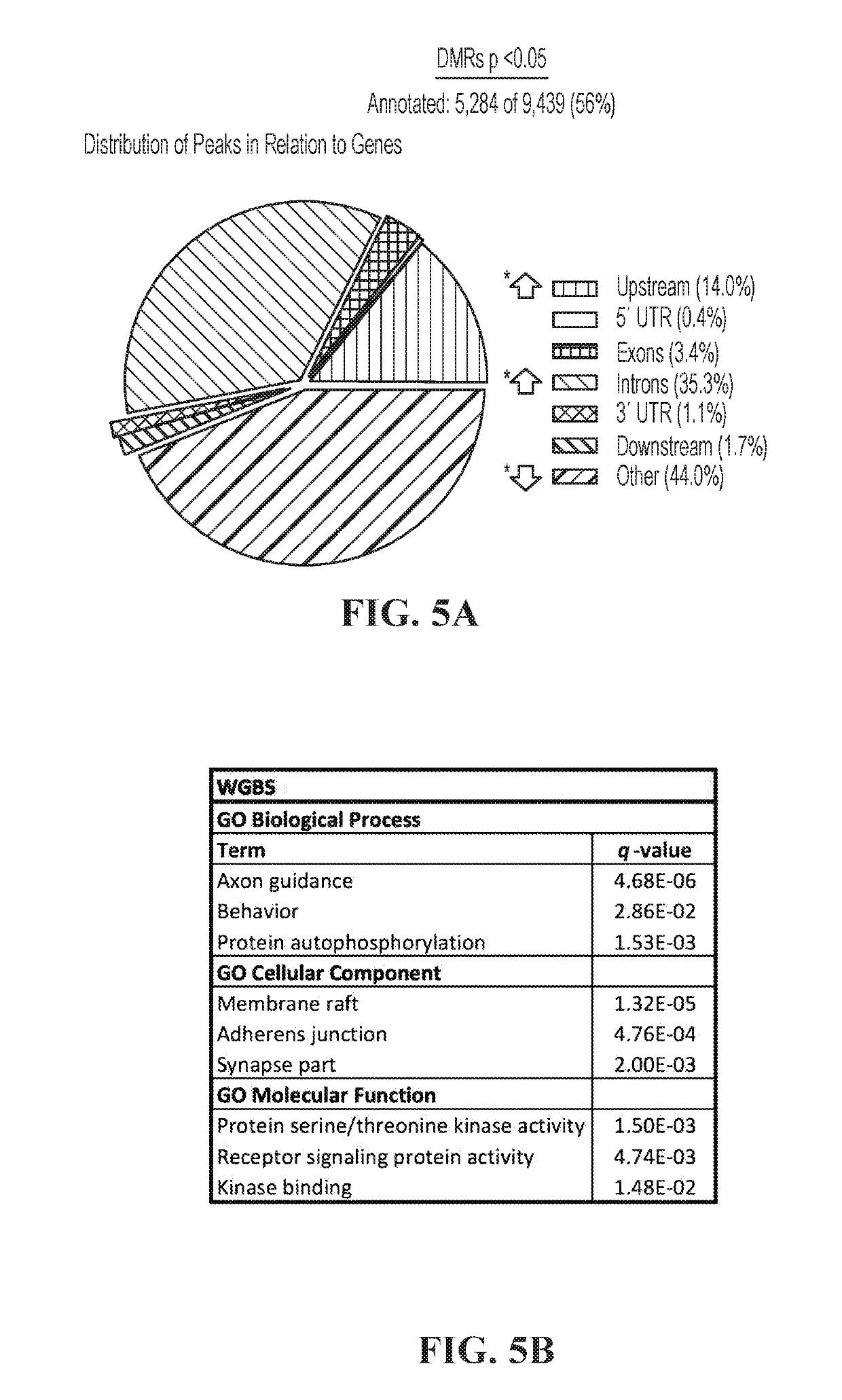Animal model of angelman syndrome
a technology of angelman syndrome and animal model, applied in the field of animal model of angelman syndrome, can solve the problems of debilitating seizures, lack of speech, and damage to the hippocampal nerv
Pending Publication Date: 2019-07-11
UNIV OF SOUTH FLORIDA +2
View PDF0 Cites 2 Cited by
- Summary
- Abstract
- Description
- Claims
- Application Information
AI Technical Summary
Benefits of technology
The present invention is about creating animals that lack the gene called UBE3A, which is associated with a condition called Angelman Syndrome. These animals can be used for research and testing of potential treatments for the disease. The inventors have also created a UBE3A-deficient rat, which is the first animal model of this condition.
Problems solved by technology
AS presents with ataxia, frequent smiling, and laughter, lack of speech, and severe, debilitating seizures.
Epilepsy in AS is often refractory to many prescribed medications, and frequently involves many seizure types.
Furthermore, chronic, intractable epilepsy is shown to cause hippocampal damage and is associated with cognitive decline.
The absence of this protein results in the accumulation of regulatory proteins, such as arc and ephexin 5 in the postsynaptic density, which is believed to cause abnormal dendritic spine morphology (filopodial) and density in hippocampal pyramidal neurons leading to aberrant synaptic function.
Method used
the structure of the environmentally friendly knitted fabric provided by the present invention; figure 2 Flow chart of the yarn wrapping machine for environmentally friendly knitted fabrics and storage devices; image 3 Is the parameter map of the yarn covering machine
View moreImage
Smart Image Click on the blue labels to locate them in the text.
Smart ImageViewing Examples
Examples
Experimental program
Comparison scheme
Effect test
embodiment 1
[0103]A non-human animal comprising cells having a genome that is lacking an entire E3 ubiquitin ligase (Ube3a) gene.
embodiment 2
[0104]The animal of embodiment 1, wherein the animal exhibits one or more physicological and / or behavioral features associated with Angelman Syndrome.
embodiment 3
[0105]The animal of embodiment 1 or 2, wherein the animal is a mammal.
the structure of the environmentally friendly knitted fabric provided by the present invention; figure 2 Flow chart of the yarn wrapping machine for environmentally friendly knitted fabrics and storage devices; image 3 Is the parameter map of the yarn covering machine
Login to View More PUM
 Login to View More
Login to View More Abstract
The present invention concerns non-human animals with cells having a genome that is lacking the entire E3 ubiquitin ligase (Ube3a) gene (including all isoforms and alternative promoters). These animals are useful for modeling Angelman Syndrome. The invention also includes methods for assessing the effect of an agent, such as potential therapeutics, on an animal model by exposing the animal or cells, tissues, or organs isolated therefrom, to an agent of interest.
Description
CROSS-REFERENCE TO RELATED APPLICATION[0001]The present application claims the benefit of U.S. Provisional Application Ser. No. 62 / 403,463, filed Oct. 3, 2016, which is hereby incorporated by reference herein in its entirety, including any figures, tables, nucleic acid sequences, amino acid sequences, or drawings.BACKGROUND OF THE INVENTION[0002]Angelman Syndrome (AS) is a devastating neurological disorder with a prevalence of 1 in 15,000. AS presents with ataxia, frequent smiling, and laughter, lack of speech, and severe, debilitating seizures. Epilepsy in AS is often refractory to many prescribed medications, and frequently involves many seizure types. Furthermore, chronic, intractable epilepsy is shown to cause hippocampal damage and is associated with cognitive decline.[0003]Nearly all cases of AS result from the disruption of a single gene that encodes an E3 ubiquitin ligase, UBE3A, a protein involved in the ubiquitin mediated protein degradation pathway (Kishino T et al., Natu...
Claims
the structure of the environmentally friendly knitted fabric provided by the present invention; figure 2 Flow chart of the yarn wrapping machine for environmentally friendly knitted fabrics and storage devices; image 3 Is the parameter map of the yarn covering machine
Login to View More Application Information
Patent Timeline
 Login to View More
Login to View More IPC IPC(8): A01K67/027A61K49/00
CPCA01K67/0276A61K49/0008A01K2217/054A01K2227/105A01K2267/0356C12N9/104A01K2217/075A01K67/027
Inventor WEEBER, EDWIN JOHNSEGAL, DAVID J.O'GEEN, HENRIETTEPYLES, BENJAMINDINDOT, SCOTT V.
Owner UNIV OF SOUTH FLORIDA
Features
- R&D
- Intellectual Property
- Life Sciences
- Materials
- Tech Scout
Why Patsnap Eureka
- Unparalleled Data Quality
- Higher Quality Content
- 60% Fewer Hallucinations
Social media
Patsnap Eureka Blog
Learn More Browse by: Latest US Patents, China's latest patents, Technical Efficacy Thesaurus, Application Domain, Technology Topic, Popular Technical Reports.
© 2025 PatSnap. All rights reserved.Legal|Privacy policy|Modern Slavery Act Transparency Statement|Sitemap|About US| Contact US: help@patsnap.com



